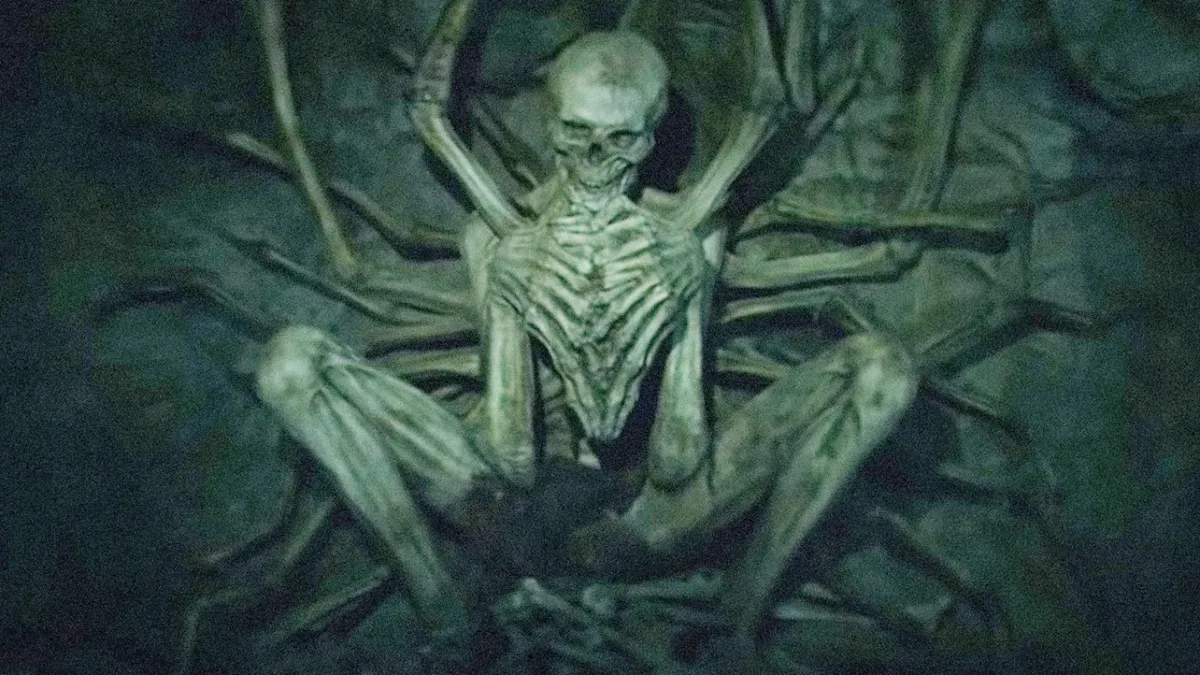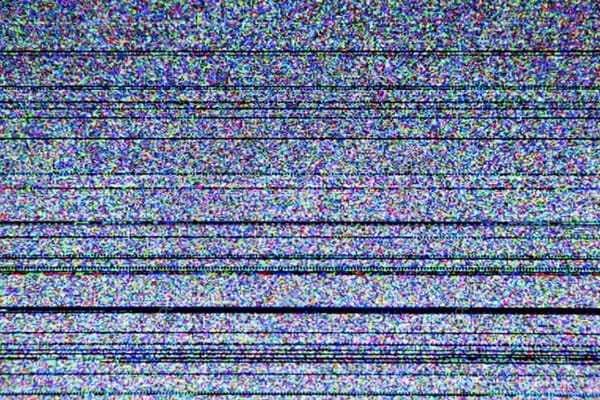Empty horror: A recent string of films underlines the weariness of American life
The Empty Man and The Smiley Face Killers explore a world that is devoid of meaning and utterly hopeless.

(For the month of October, the Wednesday freelance newsletter is moving to Fridays, as I'm taking the month off from recapping. Each week, I’m publishing a new pop culture essay from a freelancer. Remember: Your subscription fee helps me pay these freelancers for their efforts! This week: Steve Erickson on the loneliness inherent to a string of recent horror films.)
In 2021, American life feels like a thin facade covering up a gaping emptiness, where willful cruelty is treated as something to celebrate and even the most privileged people are being manipulated. While the horror movie is more respectable now than it has been at any moment since the ‘70s, thanks to “elevated horror” films like Get Out, The Witch, Midsommar and The Babadook, a handful of recent films play out weariness and exhaustion instead of suggesting excitement with the genre’s thematic possibilities.
These recent films suggest a future for a horror that embraces enigma and mystery, as well as a pessimistic fatalism. Three examples: David Prior’s The Empty Man, a 20th Century Fox film dropped in a few American theaters in the fall of 2020 by an indifferent Disney corporation, has slowly found an audience after its VOD release last January. Tim Hunter’s 2020 film Smiley Face Killers dropped on VOD with no real promotion last December and remains widely ignored.
And the 2022 release We’re All Going to the World’s Fair, directed by Jane Schoenbrun, plays out online loneliness and body-horror to a surprisingly hopeful conclusion. Its two characters, a teenage girl participating in a viral online craze and a middle-aged man she chats with, act out an alienation and geographical isolation the film takes for granted. However, Schoenbrun, who is non-binary, sees potential for real change (a la Videodrome’s “long live the new flesh”), hinting at technology changing the body in productive ways and dodging the sense of “stranger danger” their story raises. But all of these films wonder what comes next in a world which seems both unreal and extremely dangerous.
In an essay about the politics of American Psycho, John Paul Rollert notes its depiction of a “celebration of unabashed sadism in service of superiority and personal success, a spirit that contemporary capitalism seems to tolerate and even abet.” The Empty Man and Smiley Face Killers reach for something more challenging by leaving out the social context. They present numb affect as an understandable, even rational, response to a dangerous world that’s out of any individual’s control. By avoiding easy judgments, they suggest this numbness as a pervasive condition of American life.

The Empty Man gives away many of its secrets upfront, but one needs to watch it (at least) twice to understand that. Prior’s direction and Anastos Christos’s cinematography feel obsessive, as though the film were made with the same inclinations towards detective work as its protagonist. Even when one learns exactly what it’s getting at, the film leans much more toward mood and style than storytelling.
In an opening sequence set in Bhutan in 1995, four American hikers come across a cave entrance. Tempted by a whistling sound, Paul (Aaron Poole) falls in. Discovered and rescued by his friends, he takes refuge with them as a massive snowstorm approaches, but in a scene that defies initial explanation, one woman kills two of her companions and then jumps off a cliff. Paul is the only survivor.
The Empty Man then cuts to a suburb of St. Louis, Missouri in 2018. (Some of the film’s uncanny atmosphere stems from the fact that it was really shot in South Africa and not St. Louis.) James Lasombra (James Badge Dale), a former cop, owns a store selling security items. His friend’s daughter Amanda (Sasha Frolova), runs away, leaving a message written in red: “The Empty Man Made Me Do It.” Talking with Amanda’s friends, he learns that they participated in a ritual to conjure up the Empty Man, an urban legend akin to Slenderman.
But just when The Empty Man hints at becoming a creepypasta, it follows a far stranger direction. Lasombra finds a flyer for the Pontifex Institute in Amanda’s room. He tracks it down, discovering that it’s an odd cult accurately described by a man hanging outside its headquarters as “self-empowerment hippie bullshit.” Lasombra wanders through its basement, initially confused by the cult’s actions. Yet the cult’s leader, Arthur Parsons (Stephen Root), makes a strange kind of sense, although Lasombra doesn’t understand exactly what he means when says “repetition robs us of comprehension.” In the film’s main setpiece, Lasombra witnesses a fire ritual in a field, realizes that the cult is spying on him, and runs away as they pursue.

The Empty Man plays out the Pontifex leader’s ideas about the power of doubling. The very first seconds of the film are set to the drone of Tuvan throat singing. Composers Christopher Young and Lustmord’s score echoes this sound, filling The Empty Man with echoed clatter. His soundtrack would be abrasive if its volume weren’t so carefully controlled. The Empty Man is called by blowing into a pipe. In the modern world, a soda bottle will do just as well. But even this repetition of images goes further. Lasombra is one of the few characters in a recent Hollywood film with a cigarette habit. This suggests the same ritual of blowing into the air, watered down greatly from its original power.
Prior told the website Film School Rejects that he wanted to work with James Badge Dale after seeing him on the TV show Rubicon in 2010. Prior recounts “A lot of the show hinges on how interesting he was doing nothing.” Dale has gotten typecast as cops and soldiers, which he can play very well, but his potential has been hindered by such roles. His appearance in The Empty Man, with a scruffy beard and crew cut, plays into the archetype of a grizzled middle-age male detective, but much of the film is silent, framing Dale in the background during long shots.
Prior emphasizes at all times Lasombra’s essential loneliness and isolation. Most of the time, the viewer has to guess what he’s thinking. He looks like the kind of man our culture expects to be in charge, but he’s really defined by his vulnerability. The irony of The Empty Man is that even when all of Lasombra’s layers are peeled away, he’s still treated like a savior. But does he really stand for anything?
The Empty Man races through variations on familiar horror sub-genres. The opening in Bhutan hints at the Iraq-set start of The Exorcist, where Father Merrin first encounters the demon Pazuzu. From there, the film jaunts through a teen-centered slasher movie riffing on the urban legend of Slenderman. The introduction of the cult hints at folk-horror, although the setting is more urban than rural, exploring damp, decaying buildings rather than fields. The ultimate revelations suggest Lovecraftian cosmic horror, while Lasombra’s backstory fridges his wife and son in a manner that sets up his pain. But the film is more than the sum of these tropes, and it knowingly toys with the generic nature of many of these ideas.
Even on a first viewing, when one does not know all the movie’s secrets, The Empty Man suggests the manipulative power of emotion, pulling real pathos from a character whose mental life consists of tired storylines and who seems unknowable most of the time. The film cycles through all of its flirtations with various genre forms without the irony of Scream or Cabin in the Woods. It genuinely makes something new by suggesting the limitations of all the ideas with which it flirts.

Smiley Face Killers, directed by Hunter and written and produced by Bret Easton Ellis, never moralizes explicitly, but its style implicates the audience in its violence. Its story is simple: college student Jake (Ronen Rubenstein) is slowly stalked by a gang of serial killers in white vans without realizing it. (The Smiley Face Killers are an urban legend: a group of killers who’ve spent years kidnapping and drowning male college students walking around drunk in the early AM. A docu-series for the Oxygen channel argued that they are real.) The killer-cam familiar from slasher movies is used constantly in the movie’s first hour. But often, shots taken from the point of view of the van driven by the killers include the van itself. The fact that the hooded man played under heavy makeup by Crispin Glover hides in Jake’s closet may be symbolic, but he wanders through the house so brazenly that in real life, his prey would have spotted him in the film’s first half hour. The way the killers toy with Jake is reminiscent of the East German stasi’s penchant for breaking into dissidents’ houses and rearranging their furniture slightly. It’s also akin to a cat torturing a mouse just before killing it.
The film replicates the killers’ fascination with Jake but never explains it. Its first few scenes show a lamb’s throat being slit, then a scene of animal carcasses arranged to suggest Hannibal’s flesh sculptures. Jake is a generic jock, notable only for his blankness. When we first see him, he’s dressed in a white T-shirt and blue jeans. He apparently spends every night at “the party” on the beach. The location of “California State University” is never specified, and its logo is a C inside a circle, which is the copyright symbol. Even his problems — depression, possible difficulty accepting his attraction to men — are extremely common for college students his age. They’re never presented in a way that makes them dramatically compelling.
Instead, both the film and killers view Jake as a body. He’s frequently nude, objectified to a degree that would make a director pause if the character were female. But the main reason Smiley Face Killers is so effectively creepy is that its presentation of its story feels like an expression of the killers’ state of mind, not just a narrative about it. One can read occult symbolism into their black robes, sacrificial rituals, and obsession with water, but there’s no solution to the film’s mysteries. In the end, Jake seems to be a target because he’s attractive in a very familiar and bland way. He doesn’t warrant the kind of personal attention the killers give him. The world of Smiley Face Killers contains the same menace of The Empty Man, stripped away from its overtones of cosmic horror to leave only violence carried out with a passion that belies its meaninglessness.
These movies don’t yet add up to an overwhelming trend. The future of the horror movie currently seems to be heading towards nostalgic revivalism — take Netflix’s Fear Street series, Halloween Kills and Malignant. But maybe these movies should have copycats. Examining the emptying out of contemporary American life offers a more promising path forward for American horror than looking towards the past.
Episodes is published three times per week and edited by Emily VanDerWerff. Mondays feature her thoughts on assorted topics. Wednesdays offer pop culture thoughts from freelance writers. Fridays are TV recaps written by Emily. The Wednesday and Friday editions are only available to subscribers. Suggest topics for future installments via email or on Twitter. Read more of Emily's work at Vox.



